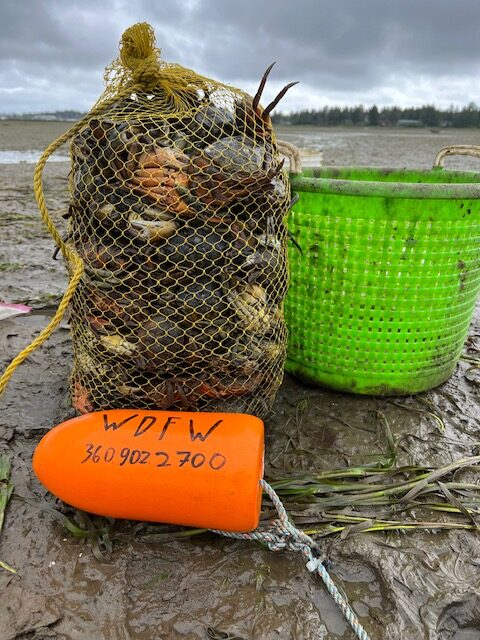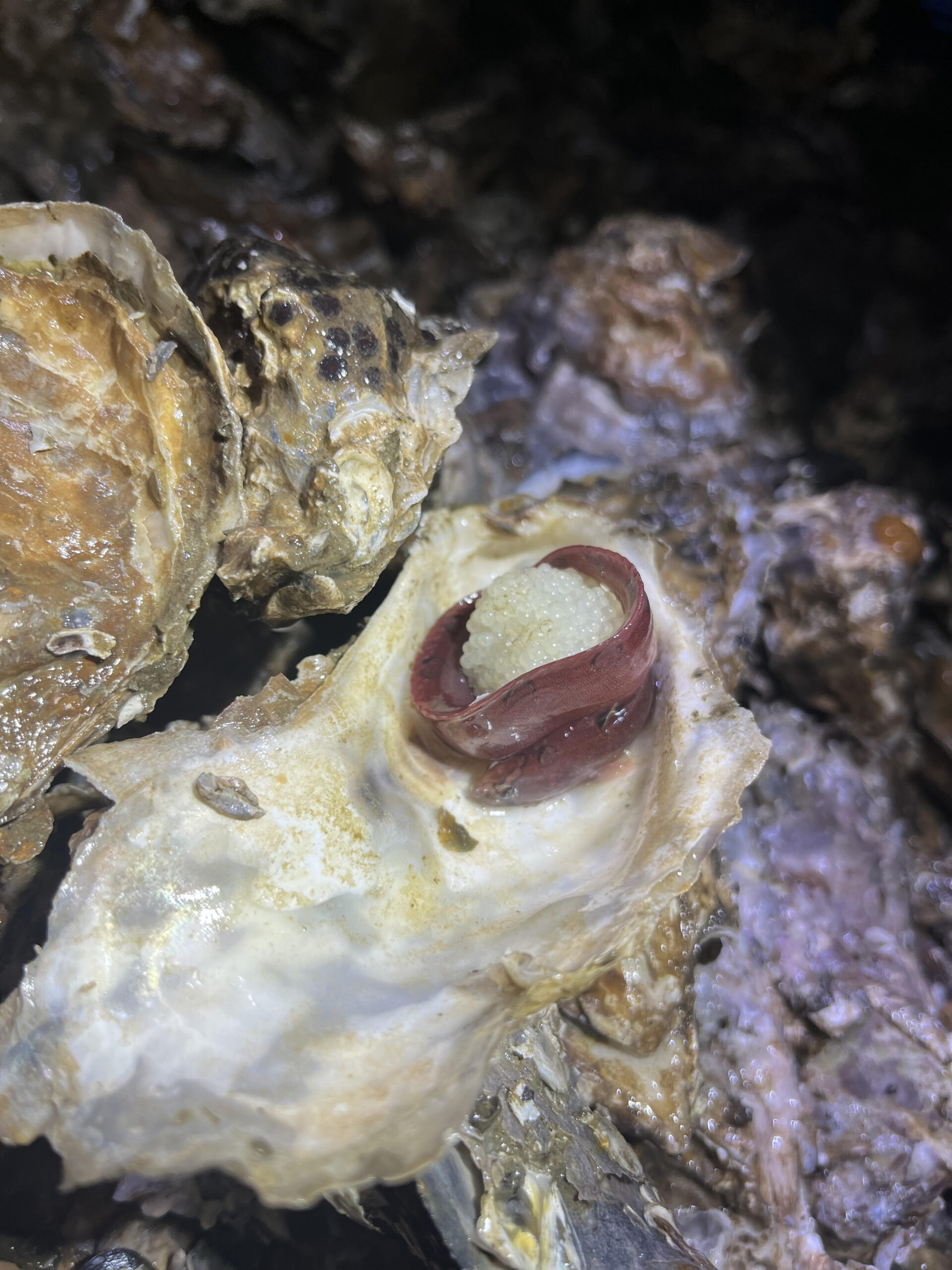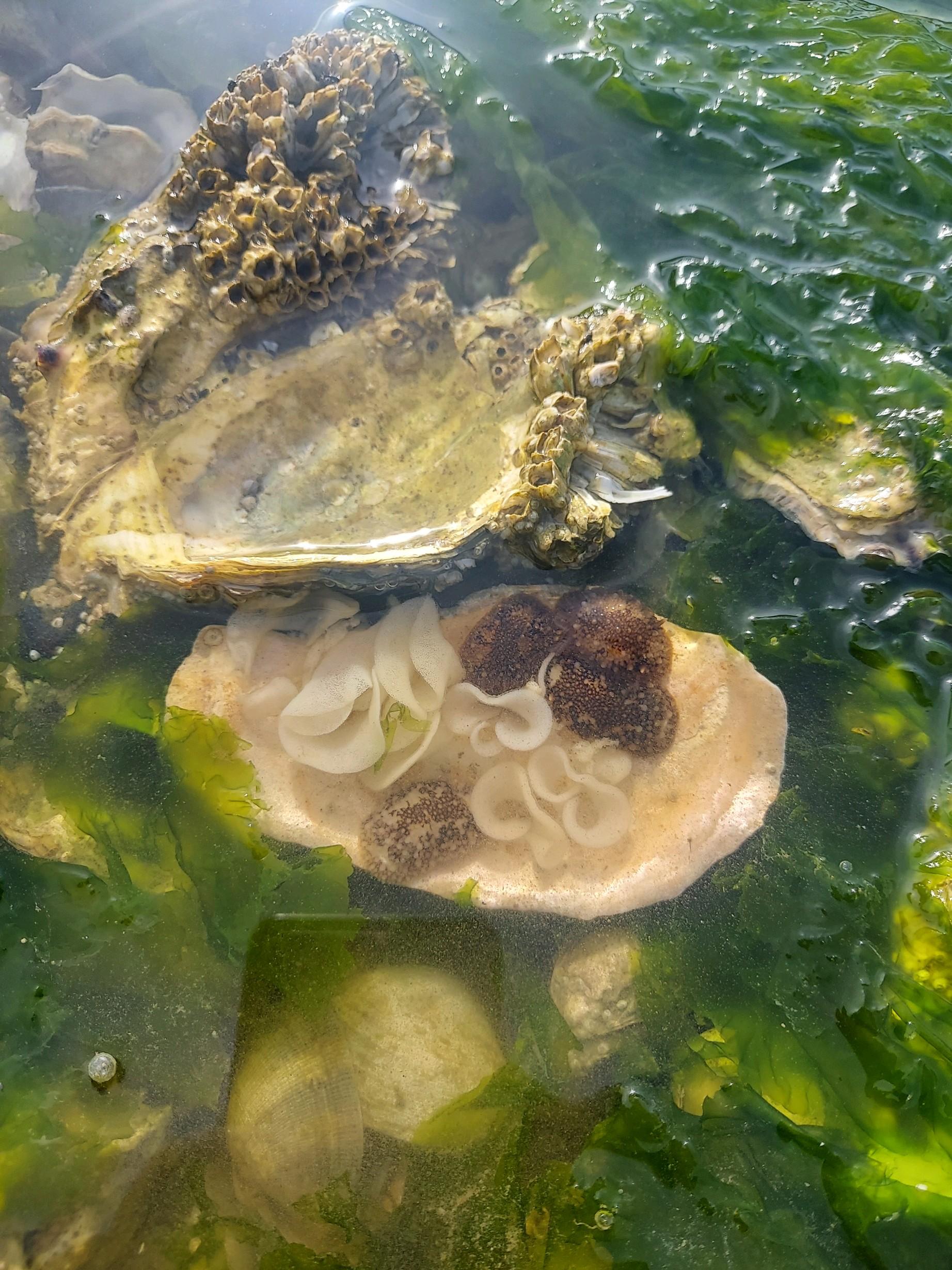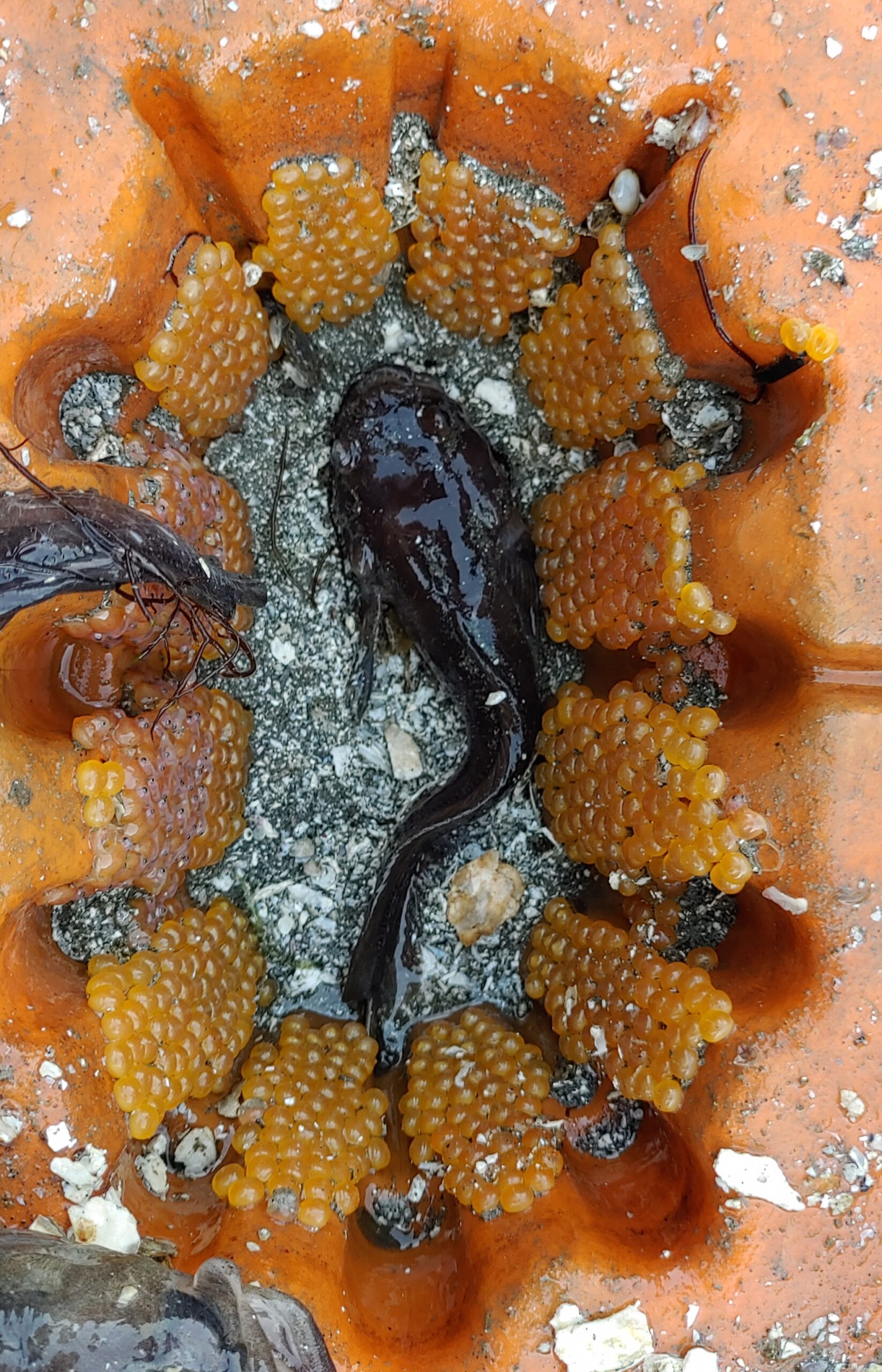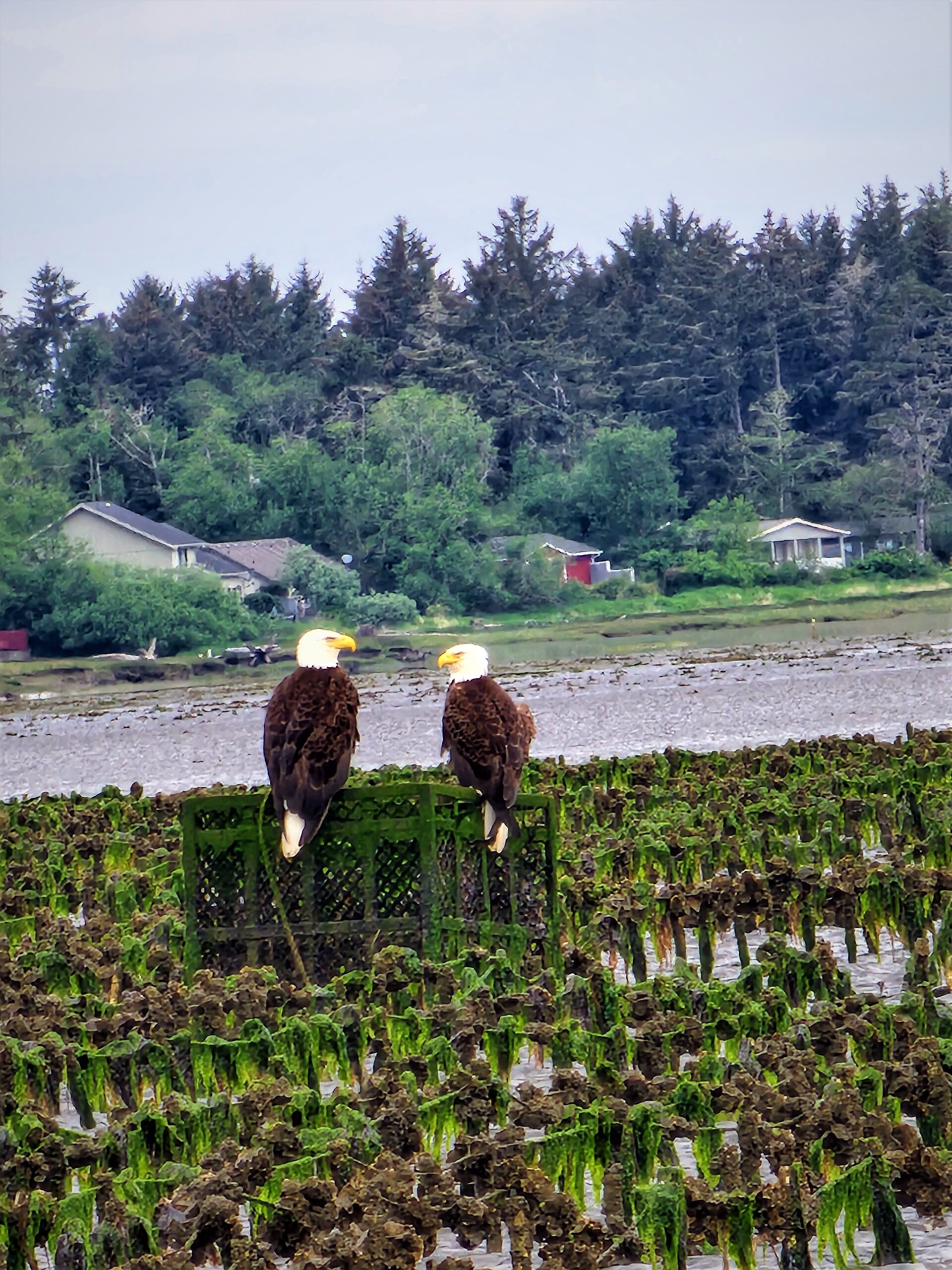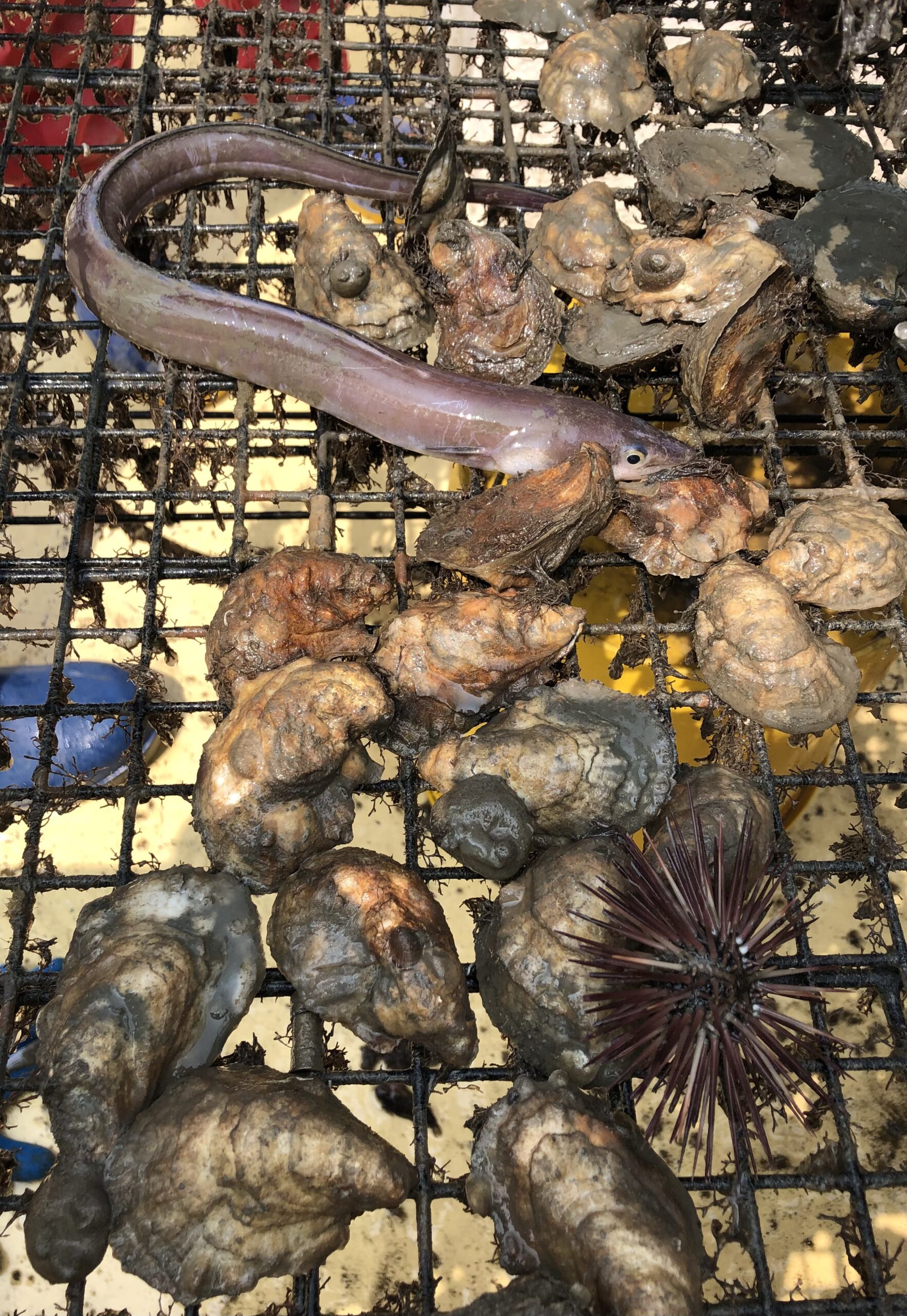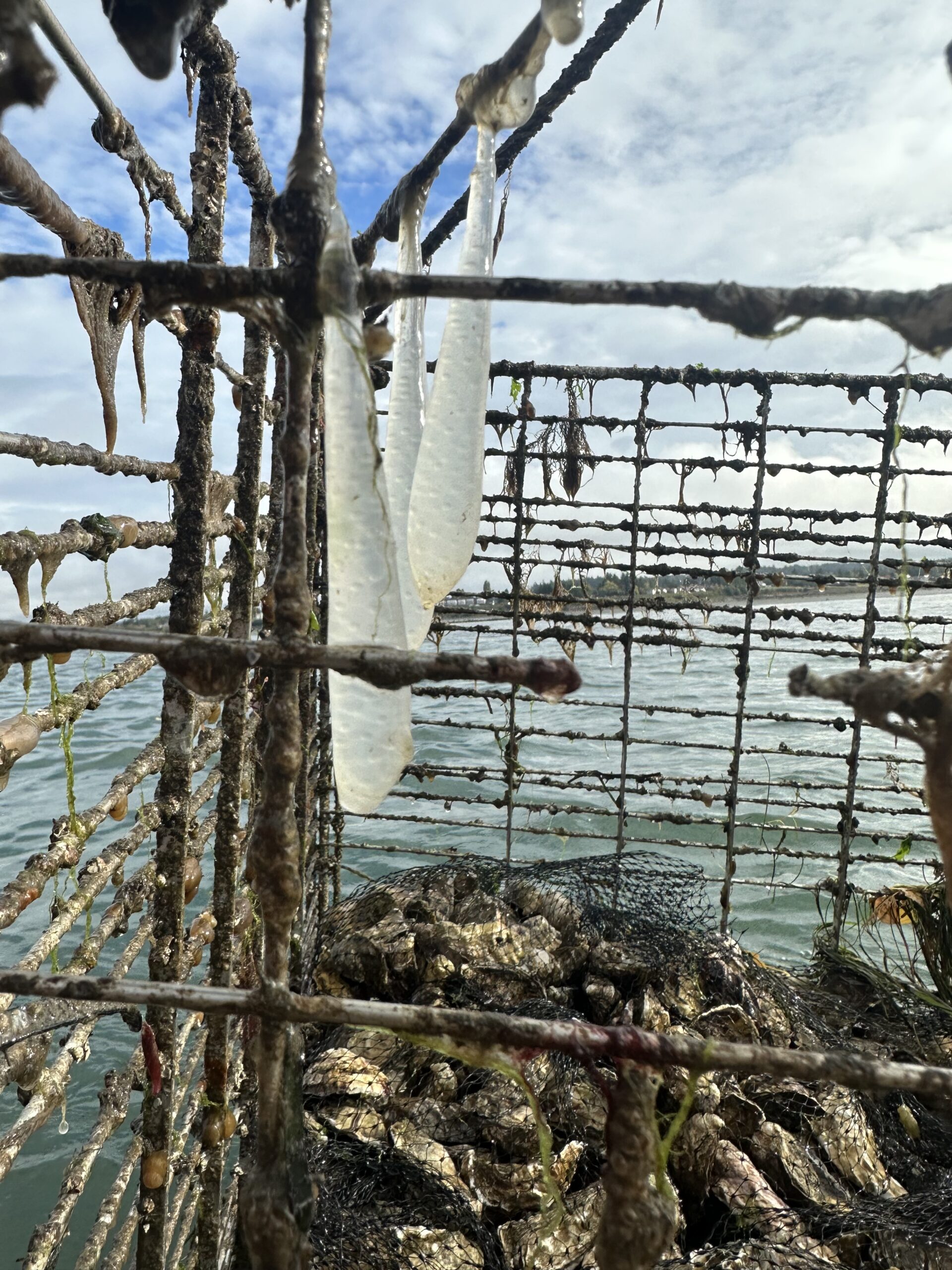February 2023 Winner Tracy Smith
Undesired habitat for the 1000's of invasive carcinus maenas in Netarts Bay.
March 2023 Winner Curtis Hicks
Oysters on the farm, providing a hatchery for these oyster toadfish eggs.
Jan 2023 Winner Jeb Sheldon
Shellfish beds are home to a variety of wildlife that are being severely impacted by invasive European Green Crab. Shellfish growers have teamed up with WDFW and Washington Sea Grant to trap this harmful species and preserve the quality of the estuary.
April 2023 Winner Derek King
Crescent Gunnel utilizing an empty oyster shell as habitat for laying and guarding eggs.
May Winner Gerardo Leon Romero
This is from one of our oyster beds where we re-seeded several years ago. What was muddy substrate has now turned into a living host area for different species of aqua life. This is a group of Sea Slugs Onchidoris bilamellata and their eggs that look like ribbons. “Onchidoris bilamellata, common name the rough-mantled doris, is a species of sea slug, a dorid nudibranch, a shell-less marine gastropod mollusk in the family Onchidorididae.” Wikipedia.
June Winner Lisa Carleton Long
Midshipmen like to use our Cultch seed bag pallets out in the bay as their nursery. Parents set their eggs everywhere! They have a safe environment to hatch and grow up in. Wikipedia: “Mating in midshipman fishes depends on auditory communication. Male midshipman fish produce several different vocalizations while females only make grunts in non-breeding situations.” This is why we call them GRUNT FISH!”
July Winner Raul Membreno Torres
That morning we were walking in the tide and I saw a couple eagles feeding from the baskets in the longline oyster beds, they eat small crabs, mussels and small fishes when tide is going out. It is very common to see eagles almost in the summer during low tides on our oyster beds.
August Winner Darien Mizuta
We were performing a monthly check of my co-culture experiment and found this eel, possibly a conger eel, inside my bottom cages together with the deployed oysters and purple urchins. They are fairly common in the area of VA Eastern Shore but that was the first time we found them inside the cages. Conger eels are nocturnal feeders preying mainly on small fishes and crustaceans. This one was might have been using the cages both for shelter and to forage for food!



